Welcome to Exploring with a Camera Thursday! Today we are going to be exploring Groups of Three in photographic composition. At the end of the post there is a link up, for you to share your images using groups of three. If you want a chance for your image to be featured here on the blog next week, you can also place your photo in the Exploring with a Camera Flickr group. A big hello to Ashley Sisk's Scavenger Hunt Sunday participants - I'm always happy to have you joining me here!
A general principle of design, in decorating or any visual art, is to use odd numbers. A composition with odd numbers is pleasing to the eye. Why? In the Visual Composition article on Wikipedia, it states the "rule of odds" works "by framing the object of interest in an artwork with an even number of surrounding objects, it becomes more comforting to the eye, thus creates a feeling of ease and pleasure."
A group of three, versus a larger odd number, is fun to work with in photography. It is small enough that compositions are simple and uncluttered, yet also large enough to provide a lot of variation in how the group can be presented. I have found there are many ways that groups of three work compositionally. Let's take a look...
Basic Geometry
Going back the basics, three objects can be arranged to form one of two things: A line or a triangle. There are no other options. This is great from a compositional standpoint - we can use lines and triangles! I did some experimenting last weekend with my origami cranes. No matter how I arranged them, they are either in a line or a triangle, but the creative possibilities are endless.
Taking three objects on a simple background and arranging them into different compositions as I did is a great exercise. You can really play around with the photographic possibilities found in groups of three.
Most of the time I'm photographing in the "real world" though, which means I'm capturing what is already there and choosing my composition solely by framing. In all cases, you will see it comes back to the basic geometry: lines and triangles. For my eye specifically, I use mostly lines.
Pointing out Differences
A group of three can be a great way to compare differences. In the lead-in image of this post, a pretty little scene discovered in Cascais, Portugal, the orange buckets are flanked by the two candle holders. Even though the candle holders are different colors, the similarity of shape and size of the candle holders serves to highlight the difference of the stack of buckets. This image also has a group of three within a group of three with the stack of buckets, but you don't notice the stack (which are similar) as much as you notice the buckets (which are different).
This image of mailboxes on a wall in Sicracusa, Sicily highlights differences in the group of three. They are all post boxes, yet the interest is that they are all different. Being slightly out of line on that fantastically textured wall adds interest too. (I also noticed the colors are the Italian Tricolore - go back and take a look at the images in that post again with an eye to groups of three.)
These lockers are framed as a group of three, but the repetition of the pink lockers serves to highlight the differences in the locks. Notice all of the lines - the locker outlines, the row of handles, and the contrasting diagonal line formed by the ever-smaller locks.
Using Similarities
Even while a group of three may be useful to highlight differences, using similarities in a group can get you to pleasing composition. For these paperweights of Murano glass from Venice, the group of three forms a line to bring your eye to the focal point. Since the paperweights are all similar in color and shape, they don't distract the eye.
I love this image of flower pots on the steps in Varenna, Italy. The pots are similar in color and shape, and form a line that contrasts nicely with the lines of the stairs. The contrast in color along with the intersection of lines draws the eye to look closer at the pots, where you begin to notice the subtle differences in their shape and size.
This image from Mt. Etna in Sicily uses the similarity of the tree silhouettes to catch your eye. Since there is no "obvious" tree of the three, you begin to see the subtle detail of the landscape illuminated behind as you look closer. I love images that hold layers of detail in them like these trees and the flower pots above. Groups of three seem to be a good way to initially pull a viewer in, where they remain to explore the multiple layers.
Groups of three are also great for highlighting architectural details and spaces. In this image of the Roman Bath in Bath, England, a composition of three openings serves to highlight the structural design of the baths. You notice the details that repeat multiple times - pillars, torches, archways. The reflection only serves to emphasize the group of three and the details further.
Clustered vs. Spread
In preparing for this topic, I've noticed that my images with groups of three usually have the objects in the group spaced evenly. These prehistoric pots from the Orsa archeological museum in Siracusa are a good example. Even though they are presented front-to-back rather than side-to-side as many of the images above, there is still an impression of even spacing and they are spread to fill the image.
This example of architectural details in a stone wall is from Bologna. By their design, the blocks are evenly spaced. By presenting them as a group of three in a diminishing line spread across the frame, the repetition of the blocks and carvings is shown while highlighting the detail of the single carving in focus.
Even though I don't seem to use them often, groups of three work fantastic in clusters. I have a classic interior design image in my head: Three vases of varying sizes clustered together on a mantlepiece. In a cluster, a group of three becomes a unique object of its own. The group is the object. In the image below, the subject is "art for sale" and the group of three paintings illuminated form that subject.
As you review the images in your archive, take new images or just go about your daily life these next couple of weeks, notice groups of three. Are they found clustered or evenly spaced? Do you see the groups in lines or triangles most often? Are they used to highlight similarities or differences? How else can you see to use groups of three in your compositions?
I can't wait to see what you find, I always learn something new when we explore together. Link your images in below or share them in the Flickr pool. The link tool will remain open through April 5. Have fun exploring!

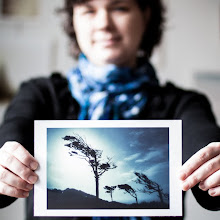






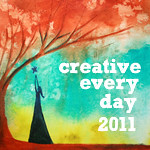



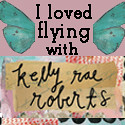

















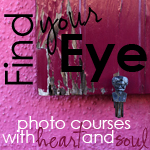
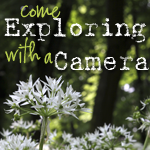

Since you mentioned groups of three I've been looking for them - crazy how one prompt can alter the way you think about the world. However, I went with a simple composition. I'm not sure I'm completely happy with it, so we'll see if I change it up before Sunday. Thanks for the inspiration!
ReplyDeleteI love this idea! When I first saw "groups of three" for Scavenger Hunt Sunday I wondered how I would position groups of three to show any kind of artistic interest. I'm so glad you posted this!
ReplyDeleteLove this! I have a fondness for using (and breaking) the rule of three around my house, but have never thought about incorporating into photos. Can't wait to give it a try.
ReplyDeleteFunny how many groups of three I can find when I start looking through my photos. I think it's a pleasing number. I seem to remember something in a Japanese Gardens book I used to have about grouping rocks in threes.
ReplyDeletei love these photos! i'll have to keep my eye out for a good one.
ReplyDeletefantastic examples of groups of three, lovely.
ReplyDeleteSuch wonderful examples! Love the lockers.
ReplyDeleteThanks for the inspiration, I love how I started looking at things and love my photo!
ReplyDeleteFun prompt! I loved all your lovely group photos!
ReplyDeleteHello
ReplyDeleteFirst time here...this looks like fun.
Your photos are stunning! The prehistoric pots are my favorite!
ReplyDeleteAs always, beautiful compositions from both Kat and the other contributors into the gallery. For my own part I was at a loss until I was in London and saw some unusual groups of three, one of which is reproduced here.
ReplyDeleteGreat post! I want to see a follow up to this topic
ReplyDeleteonline pharmacy